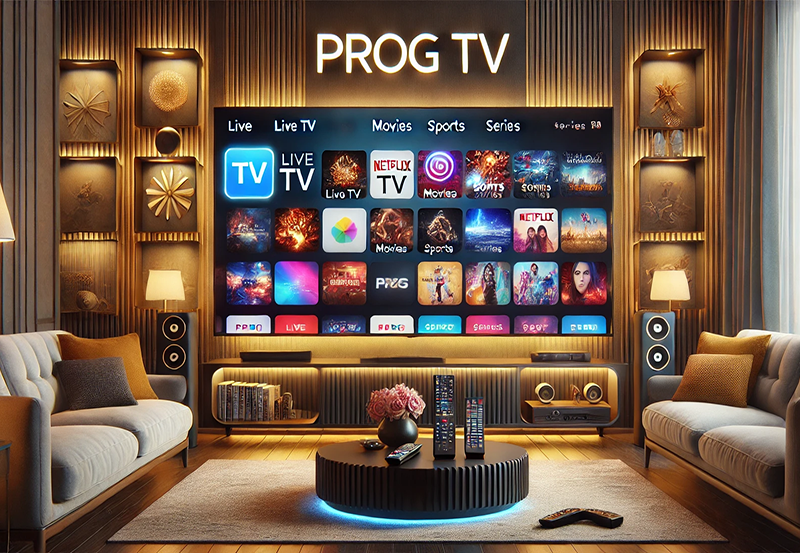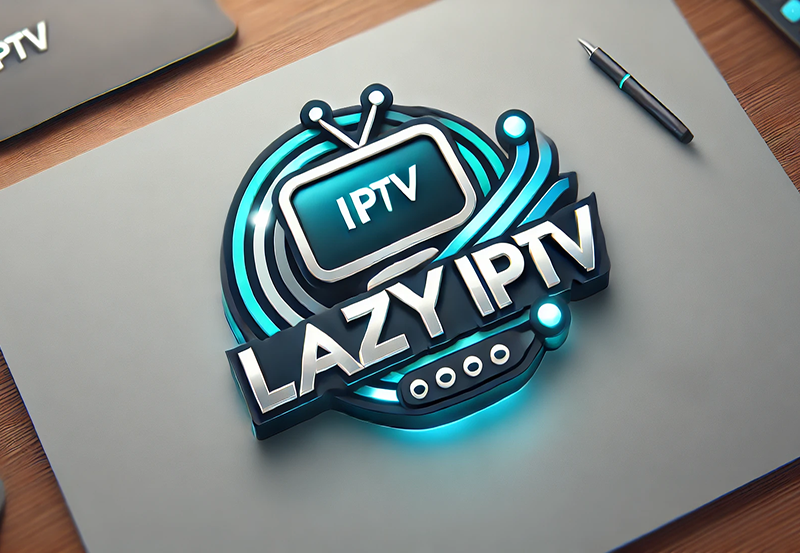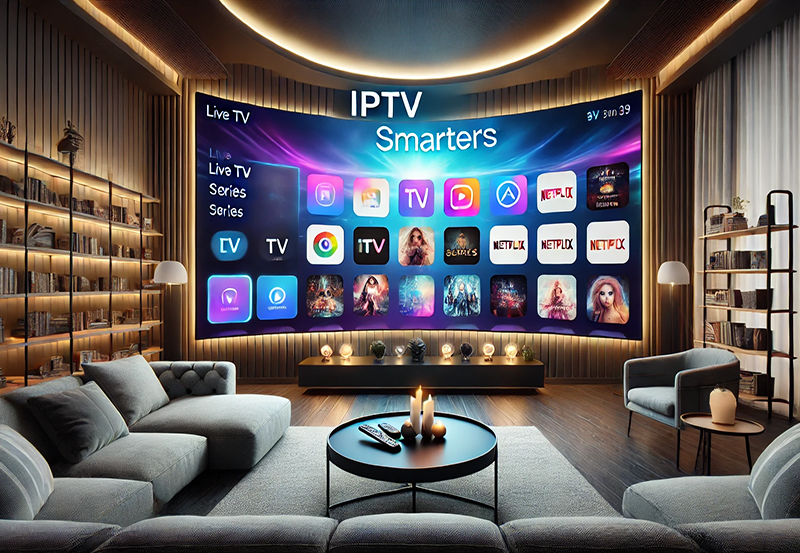So, you’ve probably heard the buzz around Kodi IPTV and its potential to revolutionize how you consume media. From offering a vast array of content to flexibility in entertainment options, it’s definitely caught the attention of many. Here, we’ll take a deep dive into how you can set up Kodi IPTV on any device, whether you’re tech-savvy or just starting. But before we plunge into the nitty-gritty, let’s quickly discuss why Kodi IPTV could become your go-to media platform.
Why Choose Kodi IPTV for Your Viewing Needs?
In an era where streaming services seem to sprout by the day, you might wonder what sets Kodi IPTV apart. First off, it’s important to mention its versatility. Whether you’re using a smartphone, a laptop, or a smart TV, Kodi offers a seamless experience across devices. Furthermore, the platform’s open-source nature means continuous improvement and innovation by its community.
Additionally, Kodi IPTV allows for the integration of various functionalities through add-ons, transforming it into a personalized entertainment hub. Add ons can be customized according to your viewing preferences, giving you access to movies, TV shows, and sporting events at your fingertips.
Smart Insight:
Enjoy premium American channels with USA IPTV, perfect for TV shows, movies, and live sports.
Installation Essentials: Preparing for Kodi IPTV
Checking Device Compatibility
Before jumping into the installation process, verifying that your device is compatible with Kodi IPTV is crucial. Most modern devices support Kodi, but it’s always better to check the specifications to avoid hiccups later. The good news is that whether you have an Android device, iOS gadget, or desktop systems like Windows, Linux, or macOS, you’re covered.
If you’re using a smart TV, ensure it supports the Kodi application. Newer models generally have this capability, but for older sets, you might need additional equipment like a streaming stick or an Android TV box.
Installation of the Kodi Application
Installing Kodi is pretty straightforward once you’ve confirmed compatibility. The process varies slightly depending on your device. Here’s how you can get started:
On Windows: Download the software from Kodi’s official website and follow the installation prompts.
- Download the installer from Kodi’s official site.
- Run the installer and follow the on-screen instructions.
- Once installed, open Kodi to start customizing your experience.
On Android/iOS: Visit Google Play Store or the App Store, search for ‘Kodi,’ and tap to install. It’s as simple as it sounds! Remember to grant necessary permissions if prompted.
Once installed, opening the app will allow you to explore a world of options that can be tailored to your liking.
Setting Up IPTV on Kodi: A Step-by-Step Guide
Utilizing Best IPTV Services
Now, we get into the setup process. But first, you’ll need to choose an IPTV service. The ‘best’ IPTV service can vary based on personal preference. Some prioritize live sports, while others may look for movie-rich offerings. Don’t shortcut this decision, as it will shape your viewing experience. Veterans in the field usually recommend cross-checking user reviews and service stability before committing to one.
Once your choice is finalized, you’ll receive an M3U playlist for IPTV, crucial for Kodi integration.
Add-on Installation for M3U Playlist
With your M3U playlist in hand, the next step involves installing a PVR add-on on Kodi. This process involves several steps, but follow along, and you’ll have it set up in no time.
- Open Kodi and navigate to ‘Add-ons’ from the main menu.
- Select ‘My Add-ons’ and search for the relevant PVR client (commonly PVR IPTV Simple Client).
- Download and install the client, then click ‘Configure.’
- Enter the M3U playlist URL provided by your IPTV service.
- Once done, restart Kodi to effectively load the content.
With this, you’re set to enjoy curated IPTV content straight from your device.
Maximizing Your IPTV Experience on Kodi
Optimizing Video Settings
While your IPTV is now functional, optimizing your video settings ensures you get the most out of the experience. Head to Kodi’s Settings menu and venture into ‘Player settings.’ Ensure that the video decoding capabilities match your device’s potential. If you’re on a high-end system, crank up the settings to deliver crystal-clear imagery, whereas older devices might require a more modest configuration.
Additionally, tweaking buffering settings can address latency or stuttering issues, thereby providing smoother playback.
Employing Add-ons for Enhanced Features
To further enhance Kodi’s functionalities, consider integrating additional add-ons tailored to your interests. These could range from music streaming, news updates, to weather forecasts. It won’t just enrich your content library but also make everything accessible from a single interface.
Be cautious, though—some add-ons may not be officially recognized by Kodi, and while they can offer more content, ensure they align with copyright regulations to avoid any legal complications.
Security Tips for Using Kodi IPTV
With a broad array of accessible content, it’s essential to ensure your privacy and security when using Kodi IPTV. Using a reliable VPN is highly recommended, especially when streaming through external links. A VPN encrypts your internet traffic, protecting personal data from potential threats or geo-restrictions.
In addition, regularly update your Kodi application and installed add-ons to ensure you’re benefiting from the latest features and security patches. Just as you would with any other software, maintaining an updated version is vital to safeguard against vulnerabilities.
Exploring Common Challenges and Their Solutions
Troubleshooting Playback Issues
Like any technology, Kodi IPTV can occasionally face hiccups. Video buffering, incomplete streams, or audio-syncing issues might crop up. Before scouring the internet for solutions, sometimes a simple restart can resolve temporary glitches.
If problems persist, tweaking network settings or uninstalling and reinstalling problematic add-ons often does the trick. Consider checking Kodi forums for community-advised solutions—they often present tips derived from real user experiences.
Addressing Add-on Failures
Sometimes add-ons cease to work, leaving users bewildered. Compatibility issues or updates may be the root cause. Frequent updates are released to address bugs or improve compatibility, so if an add-on falters, your first step should always be to see if there are updates available.
Furthermore, if an add-on repeatedly fails, consider seeking alternative add-ons that fulfill a similar role. Often, user communities may have already pointed out replacements that offer even more features.
Realizing a World of Entertainment with Your Setup
By now, your Kodi IPTV setup should be on its way to delivering an engaging multimedia experience. Of course, as you grow more familiar with its offerings, customization might beckon to better match your personal tastes. Whether it means adding more plugins, fine-tuning video settings, or even delving deeper into community-developed content, the possibilities are near limitless.
Diversity, flexibility, and innovation typify Kodi IPTV, allowing users to shape their unique entertainment landscapes without feeling chained by conventional viewing patterns or choices.
FAQs: Navigating Common Queries

What devices are compatible with Kodi IPTV?
Kodi IPTV is broadly compatible across many devices, including Windows, macOS, Linux systems, Android phones and tablets, iOS devices, and smart TVs with streaming capabilities. Always ensure compatibility with your specific device model for seamless usage.
Is it legal to use IPTV on Kodi?
Utilizing IPTV itself is legal, but streaming copyrighted content without permission isn’t. It’s crucial to ensure that your chosen IPTV service is legitimate, offering access to properly licensed content.
How can I solve my Kodi buffering problems?
Buffering issues might stem from network instability or device limitations. Enhancing your internet speed, optimizing Kodi video settings, or ensuri`ng your device isn’t overloaded with background apps can help mitigate buffering.
How do I update Kodi and its add-ons?
Updating Kodi is best done through its official website, where the latest versions are listed. For add-ons, Kodi offers manual update options within the ‘Add-ons’ section, or updates occur automatically for many add-ons when they’re available.
Can I use IPTV without a VPN on Kodi?
While you technically can, utilizing a VPN is highly recommended. It helps protect your data privacy, bypasses geographical content restrictions, and guards against potential data breaches or monitoring by malicious entities.
How to Set Up SIPTV App for Seamless Streaming





